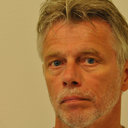A controlled, cross-sectional exploratory study on markers for the plasminogen system and inflammation in crevicular fluid samples from healthy, mucositis and peri-implantitis sites.
Anahtar kelimeler
Öz
OBJECTIVE
To investigate expression of gene markers for the plasminogen system, inflammation, and bone resorption/remodelling in peri-implant crevicular fluid samples from healthy subjects, subjects with mucositis and subjects with peri-implantitis. A possible inhibitory effect of suppuration on the analysis of gene expression in samples from subjects with peri-implantitis was also analysed.
METHODS
Peri-implant crevicular fluid (PICF) was sampled from 25 healthy subjects (H), 25 subjects with mucositis (M) and 25 subjects with peri-implantitis (P) using paper points and suction tips. The samples were analysed by quantitative polymerase chain reaction (qPCR). The following biomarkers associated with the plasminogen system, inflammation and bone resorption/ remodelling were investigated: interleukin-1 beta (IL-1β), interleukin 8 (IL-8), tissue plasminogen activator (tPA), plasminogen activator inhibitor 2 (PAI-2), tartrate-resistant acid phosphatase (TRAP) and cathepsin K (CatK).
RESULTS
IL-1β and IL-8 were significantly upregulated in the P group, and tPA and PAI-2 were significantly upregulated in the M group. These four genetic markers were oppositely regulated in samples from the subjects in the mucositis compared with the peri-implantitis group. TRAP and CatK showed no differences between the groups. The presence of suppuration did not have a detectable effect on gene analysis in samples from subjects with peri-implantitis.
CONCLUSIONS
Markers for the plasminogen system and inflammation could be used to distinguish between mucositis and peri-implantitis. The results suggested that the plasminogen system was sufficiently upregulated allowing for resolution of inflammation and healing at the inflamed implant site in subjects with mucositis, whereas such upregulation was insufficient resulting in impaired healing and prolonged inflammation in subjects with peri-implantitis. The combination of tissue inflammation and low levels of tPA was a strong predictor of marginal bone loss in this study. It may be an interesting candidate for the unambiguous diagnosis of mucositis and peri-implantitis independent of radiographs and could possibly constitute a powerful future tool for rapid assessment of the periimplant tissue condition and the effect of subject treatment.


